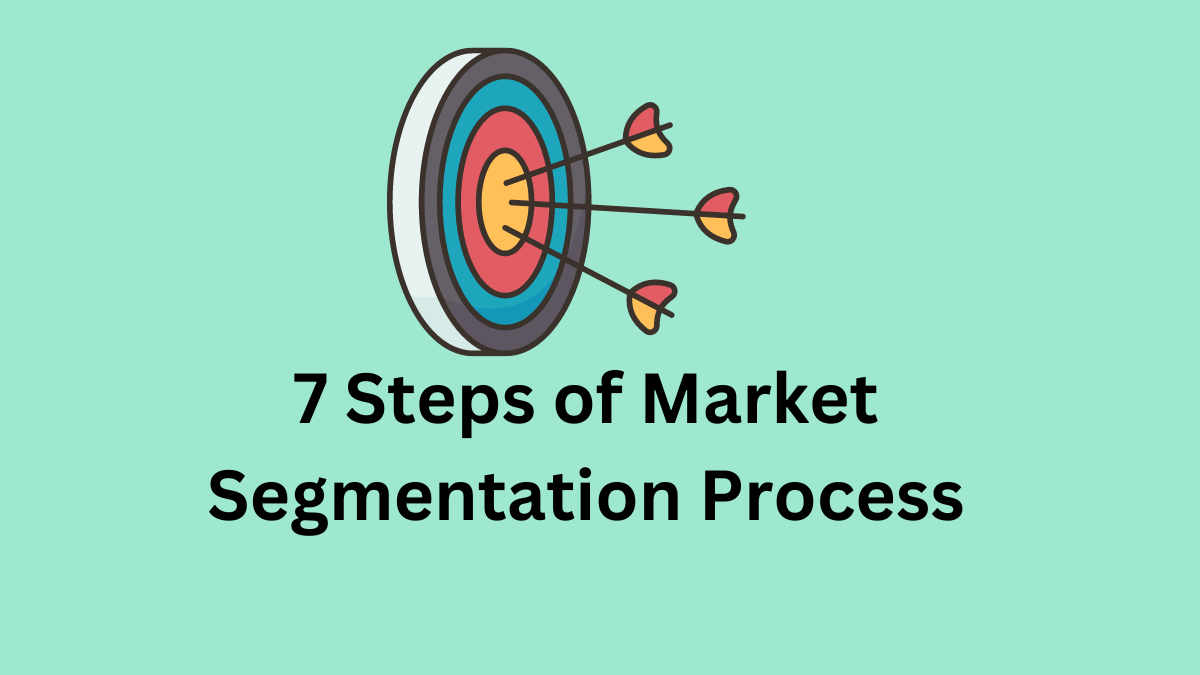Process of Market Segmentation
Market segmentation is a technique to create manageable and reachable consumer groups from the complex larger market. The following are the seven key steps in the market segmentation process. Let’s explore them in detail with simple examples.
Identify Market Segments
Identify Market Segments is the first step in market segmentation. It’s like sorting fruits in a market. You start by asking, “Who are my potential customers?” Look for similarities among them, like age, interests, or location. For example, you might find groups like “young adults” or “parents.” These are your different customer groups.
To do this, look at your big crowd of potential customers and notice who’s similar. Are some young, some parents, or others tech enthusiasts? Ask questions to know their tastes, needs, and where they live. Just like sorting ice cream lovers into ‘chocolate fans’ and ‘vanilla lovers’, you’re creating small groups. This helps you know who might enjoy your product.
List the Market Segments
Listing the Market Segments is like making a guest list for a party. Write down the names of your friends who love chocolate ice cream, and another list for those who prefer vanilla. You’re sorting people into groups based on their ice cream choice.
In business, it’s the same. You create lists of customers who share common traits or interests. For example, you might have a list of young gamers and another of older book lovers. This helps you organize your marketing efforts and make sure each group gets the right messages and offers.
Read More: 15 Examples of Market Segmentation
Evaluate Market Segments
Evaluating market Segments is like choosing the best games for your party. After making lists of friends who like different things, you look at each list. You check which list has more people excited to join.
In business, it’s similar. You examine the lists of customers with common traits. You see which group is bigger and more interested in your products. This helps you decide which segment is worth your time and resources.
You want to focus on the segments where you can make the most impact and profit, just like picking the games everyone will enjoy at your party.
Read More: 5 Requirements for Market Segmentation
Select a Target Market
Selecting a Target Market is like picking the best fishing spot. Imagine you have different lakes, each with different types of fish. You choose the lake with the fish you want to catch the most.
In business, it’s similar. You look at the market segments you’ve evaluated. You decide which group of customers is the most promising and aligns with your goals.
Then, you focus your efforts on that group. It’s like fishing where the fish are biting, increasing your chances of success. This step helps you use your resources wisely and reel in the big catch – happy customers.
Read More: A List of Top 50 FMCG Companies in the World
Develop A Positioning Strategy
Developing a Positioning Strategy is the fifth step in the process of market segmentation is like finding your unique selling style. Imagine you’re at a farmers’ market with many apple sellers. To stand out, you decide to be the seller known for the crispiest, juiciest apples.
In business, it’s similar. You’ve chosen your target market, and now you need to decide how your product or service will be special to them. You create a unique image that shows why your offering is better than others in the market. This helps customers see why they should choose you over competitors.
Run Marketing Program
Running Marketing Program is like hosting a party. You’ve got a great place (your product) and you’ve invited specific friends (your target market). Now, it’s time to throw the party!
Read More: Marketing Mix – Definition
You use various ways like invitations (ads, emails, social media) to tell your friends about your awesome party (product). During the party, you make sure everything is perfect, just as you promised.
You play the right music (messaging), serve delicious snacks (benefits), and create a fun atmosphere (brand experience). Your goal is for your friends to enjoy the party (buy your product) and want to come back (be repeat customers).
Review the Result
Reviewing the Result is the last step in the market segmentation process – is like looking back at your party to see how much fun everyone had. After your marketing efforts, it’s time to see how well things went. Did your friends (customers) enjoy the party (product)? Did they dance (buy) a lot?
You check the feedback (sales, customer reviews) to understand if they loved the snacks (benefits) and music (messaging). Suppose the party was a hit, great! If not, you figure out what could be better next time. This helps you improve for your next party (product launch) and make sure everyone has a blast (buys again).
Read Next: The 4 Cs of Marketing
Arti Kushmi holds a BBS (Bachelor in Business Studies) degree and shares her business and marketing knowledge through this website. While not writing she will be reading and enjoying the moment.
